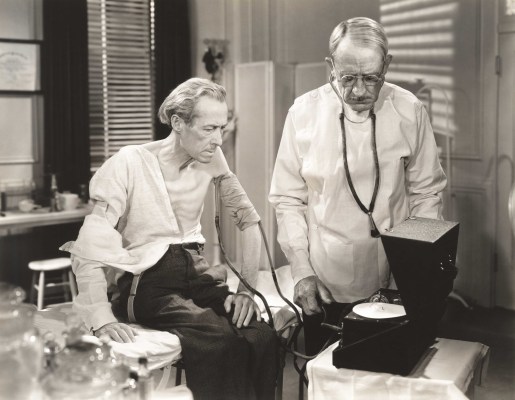Earlier this year, the White House made a bold bid against cancer, announcing a new, nationwide “Moonshot” initiative to do away with the disease — once and for all. Mark Zuckerberg also made headlines recently by promising to bankroll research efforts.
Billions of dollars in increased funding and more brainstorming toward a cure is a very good thing. With the costs of cancer care hovering around $157 billion a year, heart disease/stroke at $315.4 billion and the human toll of both at 1.2 million per year, these unrelenting illnesses need the most attention.
However, for every moonshot, there is an endless list of insidious problems plaguing the industry that don’t make headlines, but are silently killing our system (and patients), inefficiency by small inefficiency.
Take the more than 7 million patients a year accidentally given the wrong medication — resulting in 7,000 deaths annually. These are called preventable ADEs (adverse drug events). The key word here is “preventable,” and it’s a prime example of where tech know-how and resources should be harnessed and funneled to save thousands of lives. The potential cost savings is $21 billion. That’s billion with a “b.”
Healthcare providers, and in particular hospitals, need new ways of doing the old processes, or better yet, need to rethink what it means to deliver care altogether. With outpatient services and care costs on the rise, hospitals are under some extreme pressure. Patients are getting savvy (and with the rise of high-deductible plans, price sensitive), and are taking their business to specialized surgery centers and retail clinics that combine easy access with competitive pricing.
On the tech front, many hospitals are either woefully behind — running on monolithic systems that weren’t built for modern complexities of care, much less the internet — or take the high-tech/low-touch approach, i.e. implementing technology for technology’s sake. This approach is neither efficient nor cost-effective, and ultimately results in a heartless system (just ask cancer patient, Michelle Chaffee).
Forget about developing the next fitness coaching app. The real breakthrough opportunity is at your nearest community hospital.
More than a million apps and virtual services exist that make our lives richer, more entertaining or just plain better. From making a dinner reservation to picking up dry cleaning, they help us do our everyday, mundane tasks in just a few clicks. Yet in hospital IT, we’re still playing catch-up. Consider the problem of providing round-the-clock drug delivery that’s safe and accurate. While drug therapy accounts for 80 percent of the treatment received during a hospital stay, hospitals are cutting pharmacy staff in an attempt to staunch losses.
For rural hospitals, the problem is exponentially increased by the lack of qualified local pharmacists. Understaffed pharmacies mean hospitalized patients wait longer for their meds — sometimes hours. Worst-case scenario: With no redundancies or adequate after-hour pharmacy coverage, medication errors often arise.
This is where telepharmacy solutions like PipelineRx help fill the servicing gap. Telepharmacists on PipelineRx’s cloud-based platform can remotely verify (including referencing patient records and flagging potential mistakes) an order prescribed by a doctor — day or night. It’s high-tech convenience and efficiency that saves money — and lives.
Since 2011, more than $13 billion in venture funding has flooded into digital health, financing startups tackling everything from personal DNA tests to virtual doctor’s visits. The consumerization of care has been nothing short of phenomenal, but we’re still waiting for more — more cloud-based apps like PipelineRx that will virtualize care delivery, optimize hand-offs between nurses after a busy night shift or make the patient’s experience a little more human.
My message to entrepreneurs? Forget about developing the next fitness coaching app. The real breakthrough opportunity is at your nearest community hospital. Bring the productivity enhancement and beautiful user experience we’ve seen from the technology titans (Google, Amazon, Facebook) and digital unicorns (Airbnb, Snapchat, Uber) to the old school world of hospital IT.
Another example: Bloodbuy, an online platform that’s bringing transparency to a miserably inefficient market. Think a Priceline-style, one-stop blood shop for hospitals and acute care facilities. Or The Right Place, a web-based app that cuts down the days older patients languish in hospital rooms waiting for a nursing home spot by digitally tracking available beds. (Disclaimer: The Right Place was the grand-prize winner in the athenahealth MDP Innovation Challenge).
These are just a couple of examples of innovators that are tackling big, but inherently less-flashy problems in healthcare — and frankly, we need more willing to do the same. The potential of cloud solutions to radically transform the most complicated, systemic problems of hospitals and improve the way providers work, interact and treat patients is staggering. We’re looking for a few more entrepreneurs willing to dive down the rabbit hole to help unbreak healthcare. Are you game?
